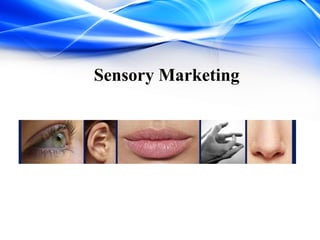linkage between sensory and neuro marketing
- 2. Definition Sensory marketing: Marketing techniques that aim to seduce the consumer by using his senses to influence his feelings and behaviour. ---------AMA
- 3. Evolution of Sensory Marketing 1950s 1970s
- 6. Visual Branding Logos Corporate colors Characters Graphical tools Look /Appearance
- 8. Olfactory Aroma & Persuasion Direct Sense
- 9. Gustative Food and beverage brands
- 15. 10 Rules Dan Hill, Sensory Logic ŌĆó Simple ŌĆó Relevant ŌĆó Sell hope ŌĆó Believable ŌĆó Memorable ŌĆó Keep it close to home ŌĆó Sensory Bandwidth ŌĆó Focus on faces ŌĆó DonŌĆÖt lead with price ŌĆó Be sensitive to the gender gap
- 22. THANK YOU






















